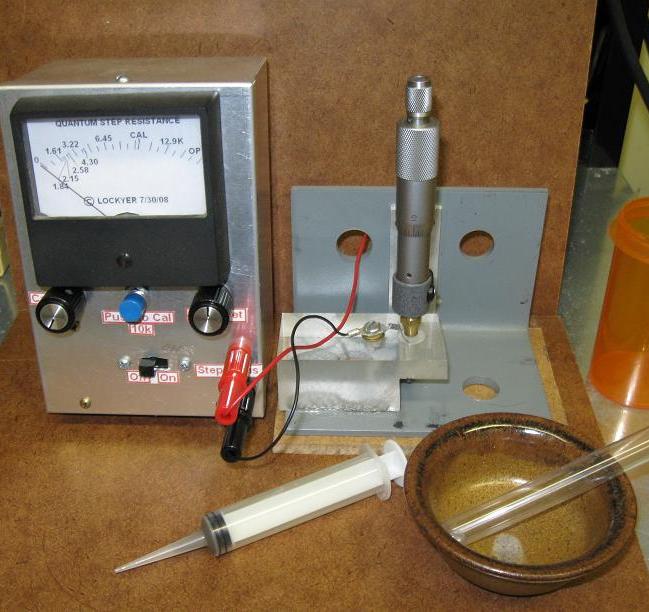Quantum Step Resistance
Date: 2010-06-26 Time: 09:00 - 17:00 9.9 (1 decade 4 years ago)
Where: Long Beach, CA, United States Venue: The Pointe, Cal State Long Beach
Description
The quantum Hall step resistance effect was discovered by von Klitzing in 1980 and required superconducting low temperatures and high magnetic fields. In 1988, van Wees and Wharam discovered that step resistances can be produced at room temperature and no magnetic field, in a one degree nanowire conductor a few atoms thick. Here we demonstrate that quantum step resistances can be obtained by pulling up a temporary liquid (mercury) metallic nanowire. The quantum step resistances can be measured with a simple Quantum Step Resistance Ohmmeter of my design. The room temperature quantum step resistances are due to Cooper pairs of electrons giving an R=h/2ie2 Ohms, where h is Planck constant, (e) is the fundamental charge and i = 1, 2, 3, 4, 5, 6, 7, 8. The meter scale is marked at 12.9K, 6.45K, 4.3K, 3.22K, 2.58k, 2.15K, 1.84K, and 1.161K Ohm.



